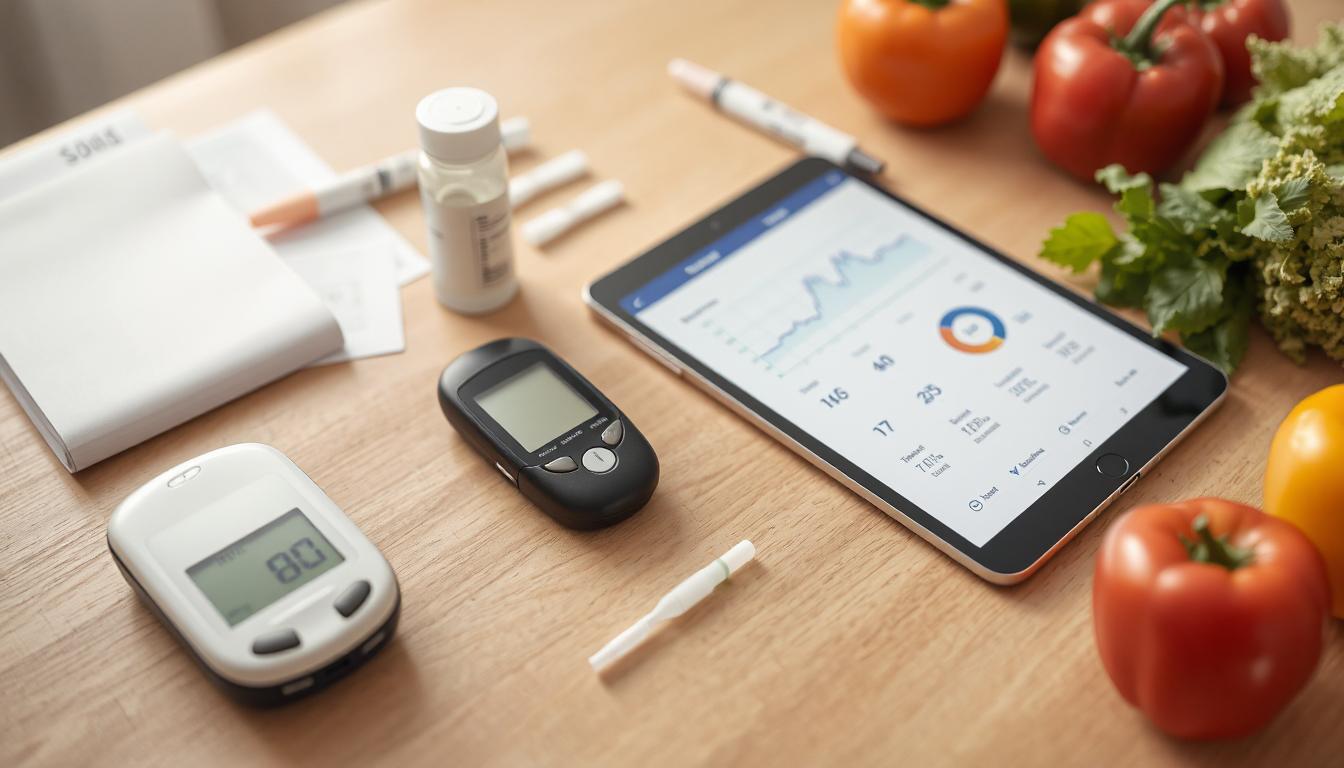Diabetes | Symptoms, Types & Treatment
 Eryn
|
Eryn
|
 25 Jul 2025
25 Jul 2025
What Is Diabetes and Why Does It Happen
Diabetes is a health condition where the body has trouble handling sugar the right way. Usually, when you eat, your body turns food into glucose (a kind of sugar), and a hormone called insulin helps move that sugar into your cells so you can use it for energy.
But in diabetes, something goes wrong. Either your body doesn’t make enough insulin, or it doesn’t use it like it should. That means too much sugar stays in your blood. Over time, that extra sugar can cause problems in different parts of your body—from your eyes to your feet to your kidneys.
Different Types of Diabetes You Should Know
There’s more than one type of diabetes, and they don’t all work the same.
Type 1 diabetes is when the body can’t make insulin at all. It’s usually found in kids or younger adults, but it can happen at any age. People with this type need insulin every day.
Type 2 diabetes is more common. In this case, the body still makes insulin, but doesn’t use it well. Over time, the insulin can’t keep up, and sugar builds up in the blood. A lot of people ask, is type 2 diabetes genetic? The answer is partly yes. Family history does matter—but so do lifestyle habits like diet and activity.
There’s also gestational diabetes, which shows up during pregnancy. It often goes away after the baby is born, but it can raise the risk of getting type 2 later.
And then there’s type 3 diabetes—a newer term some researchers use when talking about the link between insulin resistance and memory loss, especially in Alzheimer’s. It’s not an official type, but it comes up in studies now and then.
Common Symptoms That Could Point to Diabetes
Diabetes doesn’t always shout. A lot of signs seem normal at first and can get missed.
People often feel thirsty all the time. They go to the bathroom more often, especially at night. Some feel tired for no reason. Others notice their vision getting blurry or cuts taking longer to heal.
There are other signs too. Things like diabetes foamy urine could point to kidney trouble. Diabetes swollen feet might show poor blood flow. Some folks see changes in toenails early on—first stage diabetes toenails may look thick or yellow. And yes, does diabetes cause hair loss? It can. Poor blood flow or hormone changes from high sugar levels can make hair thinner over time.
What Puts You at Risk of Developing Diabetes
Some things raise your risk more than others.
If you don’t move much, carry extra weight, eat a lot of processed foods, or have high blood pressure or cholesterol, your chances go up.
Family history also matters. If a parent or sibling has diabetes, especially type 2, your risk is higher. Getting older plays a role too. So does having gestational diabetes during pregnancy.
Even some medications or long-term stress can have an effect.
How Doctors Diagnose and Track Diabetes
Doctors usually start with a simple blood test.
The most common one is the A1C test, which shows your average sugar levels over the past few months. If it’s high, it might mean diabetes.
They also do a fasting blood sugar test or a glucose tolerance test. Once you’re diagnosed, you’ll need to keep track—maybe with daily checks or every few months at the clinic.
Sanford Pharmacy helps people get the tools they need—test strips, meters, and access to advanced diabetes supply options to make tracking easier.
How Diabetes Affects the Body Over Time
If it’s not controlled, high blood sugar can wear your body down. It can cause eye trouble. Damage the kidneys. Mess with your nerves. That’s why some folks lose feeling in their feet.
You might not notice at first, but signs like diabetes swollen feet, slow healing sores, or numbness in your toes could mean the damage has started.
And when kidneys start leaking protein, you might see foamy urine. That’s not normal, and it needs checking right away.
Daily Habits That Help Manage Blood Sugar
Even small changes make a big difference.
Start by eating more real food—fruits, veggies, lean meats, and whole grains. Cut down on sugar and fried stuff. Drink more water. Try to move a little each day—even a 20-minute walk helps.
Don’t skip meals. Keep your stress in check. And sleep—getting enough rest keeps your sugar more stable than most people think.
Understanding Diabetes Medications and Treatments
Some people take pills, others need insulin, and a few need both. It depends on your body and your blood sugar levels.
Metformin is often the first pill doctors try. Then there are newer options that help with weight or protect your heart too. People with type 1 diabetes always need insulin.
At Sanford Pharmacy, you’ll find trusted diabetes medication, insulin pens, and support for your daily routine. We also help set up advanced diabetes supply needs like continuous glucose monitors or refill plans.
Living a Full Life While Managing Diabetes
You don’t have to stop living. You just have to plan a bit more.
Bring your snacks. Test your sugar when you’re on the go. Wear a medical ID if you need to.
You can travel, eat out, go to parties—just stay aware and listen to your body. People with diabetes hike, dance, run marathons, go camping. It’s all possible with the right prep.
When to See a Doctor and What Not to Ignore
If your vision blurs suddenly or your feet swell, don’t wait. If you notice foamy urine, or your skin’s dry and itchy for no reason, call your doctor.
If you feel weak or confused, or your sugar drops too low, that’s urgent.
Even if you’ve managed your diabetes for years, bodies change. Keep up with your checkups. And when something feels off, say something.
Sanford Pharmacy is always here with answers, tools, and the care you need to stay in control—day by day.
Categories

What Is Sucralfate Used For?
 Abdullah
Abdullah

Foods to Avoid When Taking Sulfamethoxazole / Trimethoprim
 Ibrahim
Ibrahim

What Is Rifaximin Used For?
 Aden
Aden

What is Minocycline?
 Tina
Tina

How Long Does Levofloxacin Stay in Your System
 Annette
Annette












.webp)
.webp)
-(2).webp)

.webp)